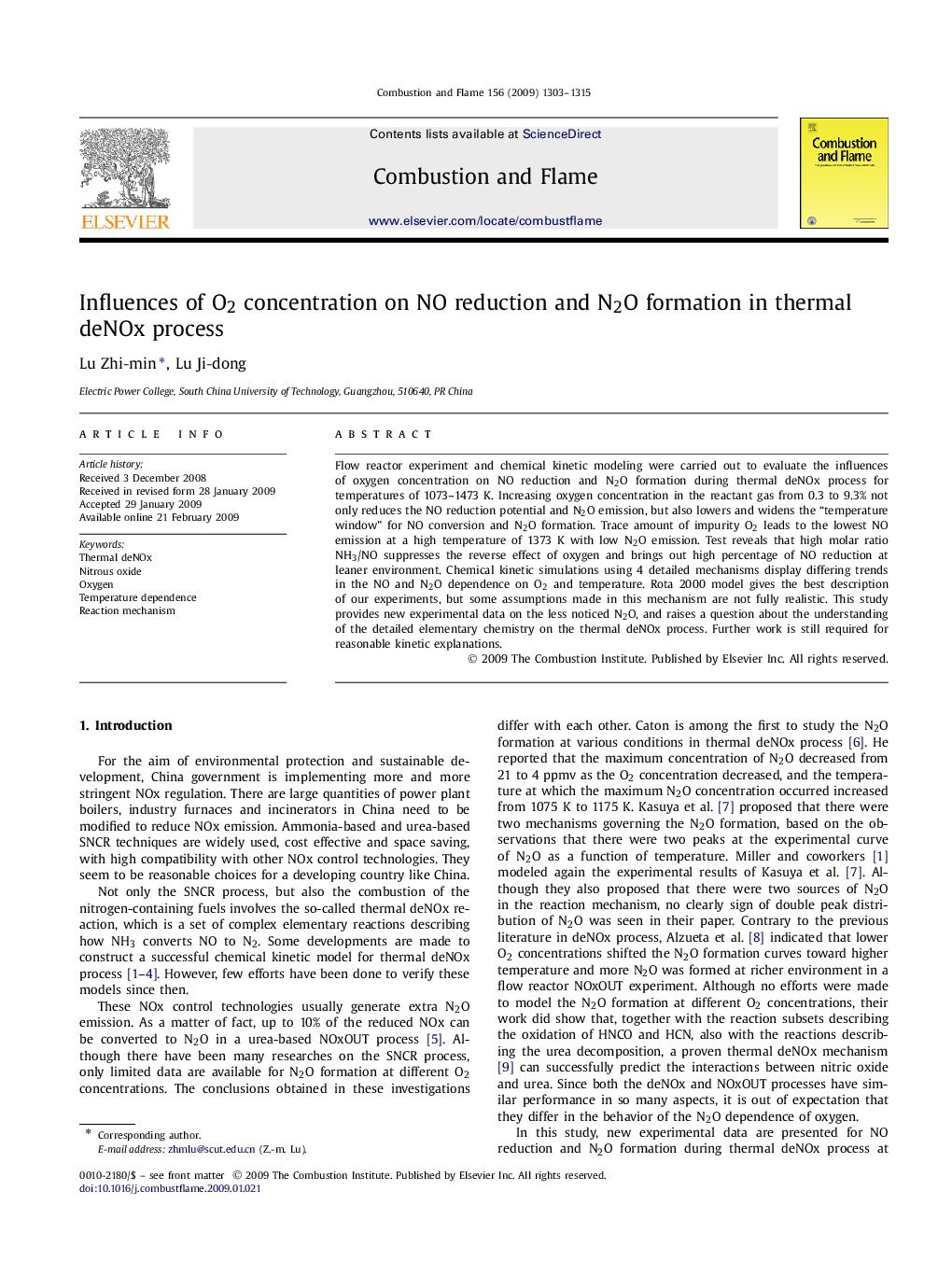| Article ID | Journal | Published Year | Pages | File Type |
|---|---|---|---|---|
| 166995 | Combustion and Flame | 2009 | 13 Pages |
Flow reactor experiment and chemical kinetic modeling were carried out to evaluate the influences of oxygen concentration on NO reduction and N2O formation during thermal deNOx process for temperatures of 1073–1473 K. Increasing oxygen concentration in the reactant gas from 0.3 to 9.3% not only reduces the NO reduction potential and N2O emission, but also lowers and widens the “temperature window” for NO conversion and N2O formation. Trace amount of impurity O2 leads to the lowest NO emission at a high temperature of 1373 K with low N2O emission. Test reveals that high molar ratio NH3/NO suppresses the reverse effect of oxygen and brings out high percentage of NO reduction at leaner environment. Chemical kinetic simulations using 4 detailed mechanisms display differing trends in the NO and N2O dependence on O2 and temperature. Rota 2000 model gives the best description of our experiments, but some assumptions made in this mechanism are not fully realistic. This study provides new experimental data on the less noticed N2O, and raises a question about the understanding of the detailed elementary chemistry on the thermal deNOx process. Further work is still required for reasonable kinetic explanations.
